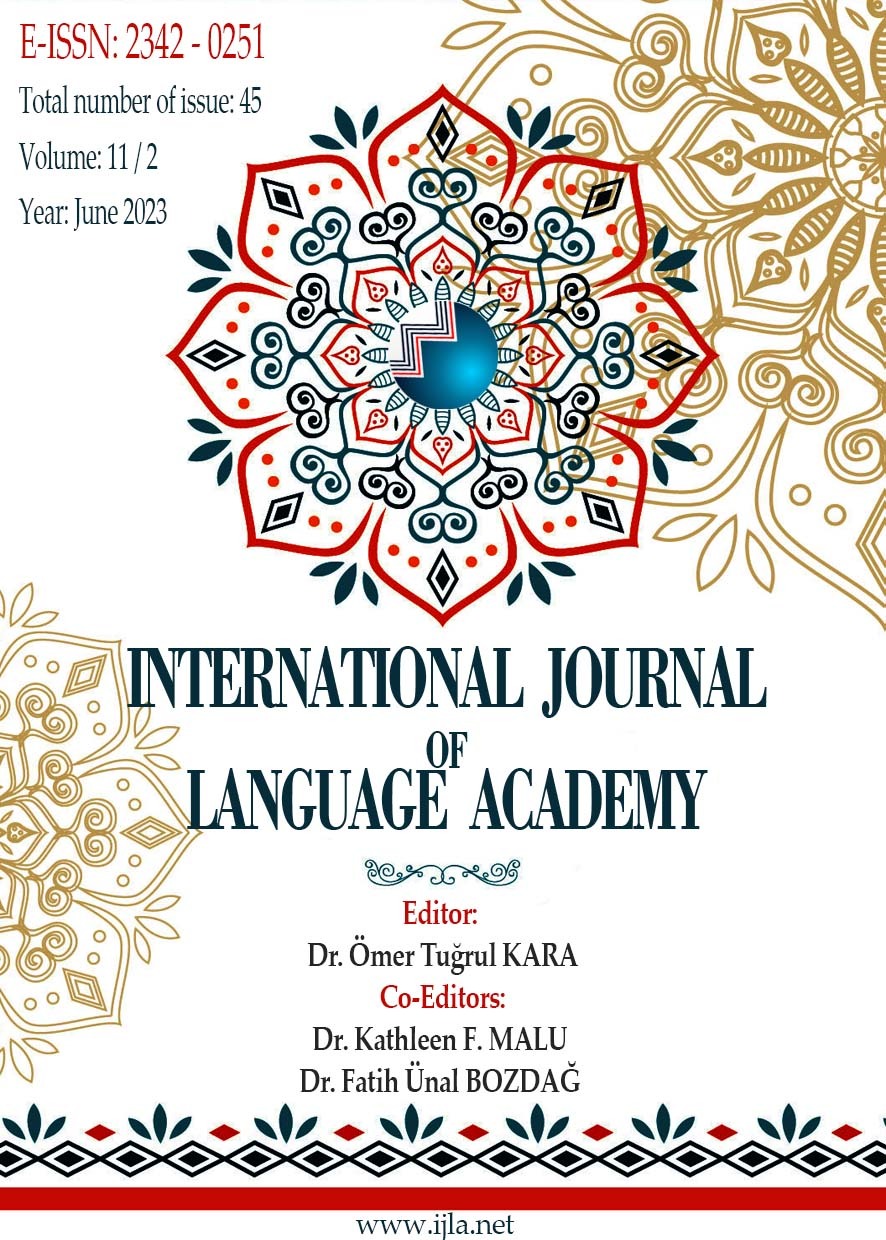Author :
Abstract
Armin Vámbéry’nin 1867 yılında Leipzig’de yayımlanan Cágataische Sprachstudien adlı eseri içerisinde Burak-ı Divāne adlı tasavvufi bir mesnevi bulunmaktadır. Bu mesnevide Burak adlı bir Allah aşığı, Allah ile yaptığı bir anlaşmanın gereklerini yerine getirdikten sonra Allah’tan cehennemi ortadan kaldırmasını ister. Allah ise bunu kabul etmez ve sevdiği bu kulunu kırmak istemediği için Cebrail aracılığıyla Hazret-i Musa’yı aracı olarak gönderir. Hazret-i Musa Divane Burak’ı azarlayarak kızar; Burak ise Allah’ın kendisini tüm günahlarına rağmen affedeceğini söyler. Bu metnin İstanbul’da bulunan bir başka nüshası temel olarak benzese de Burak’a ders vermek amacıyla onun haramiler tarafından dövülmesi olayı Vámbéry nüshasında yer almaz. İslam dışı ögeler içeren bu kıssadaki ana kahraman olan Burak-ı Divāne’nin davranışlarını tasavvuf açısından naz, niyaz ve arbede makamlarındaki bir Allah aşığının davranışları olarak görmek mümkündür. Ancak oryantalist bakış açısıyla tasavvuf kaynaklarının farklı anlamda yorumlandığı gerçeğini de göz ardı etmemek gerekir. Bu anlamda, bu metnin İngiliz oryantalizmine hizmet ettiği bilinen Vámbéry tarafından özellikle seçilip eserine yerleştirildiğini söylemek hiç de uzak bir ihtimal değildir. Hikâyede geçen Hazret-i Musa karakteri ile özellikle katı Yahudi şeriatını, Allah ile konuşan hatta onu suçlayan Burak karakteri ile Eflatuncu bir tasavvuf anlayışını görmek de mümkündür. Bu çalışmada İstanbul nüshası üzerinde yapılan bir metin yayını da esas alınarak iki nüsha karşılaştırılmış, İstanbul ve Vámbéry nüshalarının farkları dipnotta ayrıca gösterilmiştir.
Keywords
Abstract
Armin Vámbéry's Cágataische Sprachstudien, published in Leipzig in 1867, contains a Sufi masnavi called Burak-ı Divāne. In this masnawi, a lover of Allah named Burak asks Allah to eliminate hell, because he has fulfilled the requirements of a covenant he has made with Allah. However, Allah does not accept this, and since He does not want to offend this servant he loves, He sends the Prophet Moses as an intermediary through Gabriel. The Prophet Moses rebukes Divane Burak and gets angry, but Burak says Allah will forgive him despite all his sins. Although another copy of this text found in Istanbul is similar, the incident of Burak being beaten by the haramis to teach him a lesson is not mentioned in the Vámbéry’s copy. It is possible to see the behavior of Burak-ı Divāne, the main protagonist in this story containing non-Islamic elements, as the behavior of a lover of Allah in the positions of naz, niyaz and arbede in terms of Sufism. However, we should not ignore that Sufi sources are interpreted differently from the Orientalist point of view. In this sense, it is not impossible to say that this text was specially selected and placed in his work by Vámbéry, who is known to serve English orientalism. It is also possible to see the character of the Prophet Moses in the story, especially the strict Jewish sharia, the character of Burak, who speaks to Allah and even accuses him, and a Platonic understanding of Sufism. In this study, the two copies were compared based on a text published on the Istanbul copy, and the differences between the Istanbul and Vámbéry copies were shown separately in the footnote.





